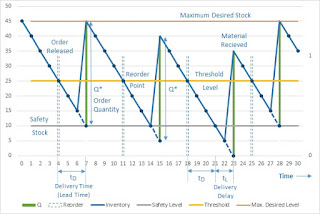Inventory Policies: The Basics

Inventory Policies Inventory policies : inventory definition, stock classification, inventory control issues, continuous and periodic inventory review, order size What Is Inventory? Inventory (stock) – materials in a supply chain or in a segment of a supply chain, expressed in quantities, locations and/or values, not used at present, but kept for the future use, consumption or sale (Krzyżaniak, 2009).

